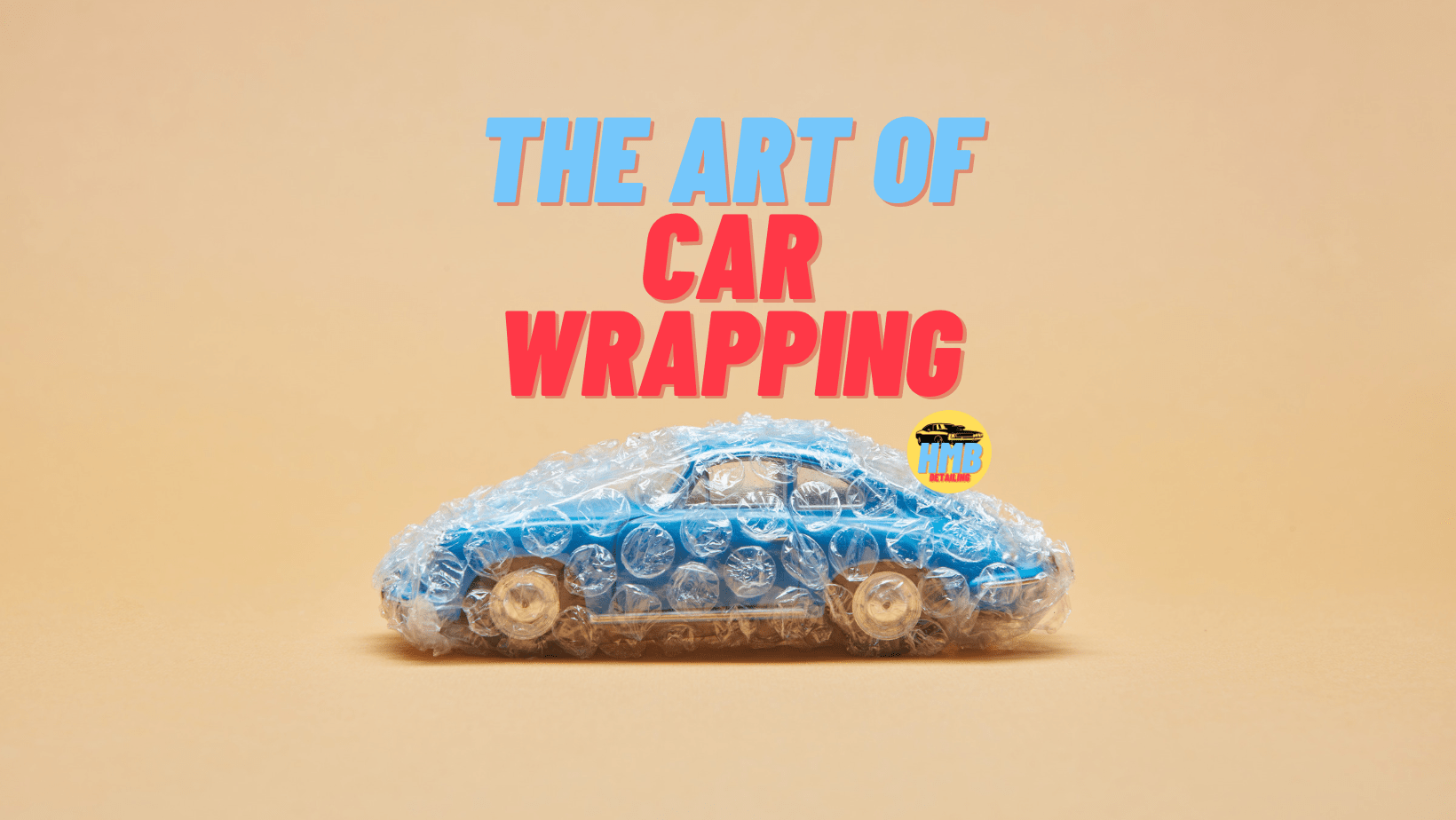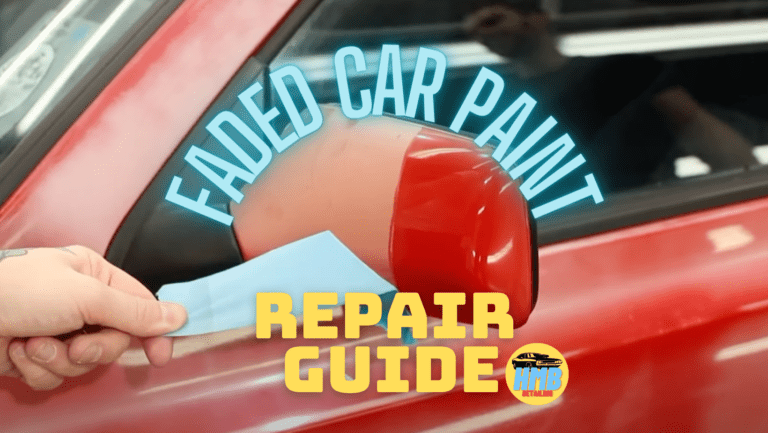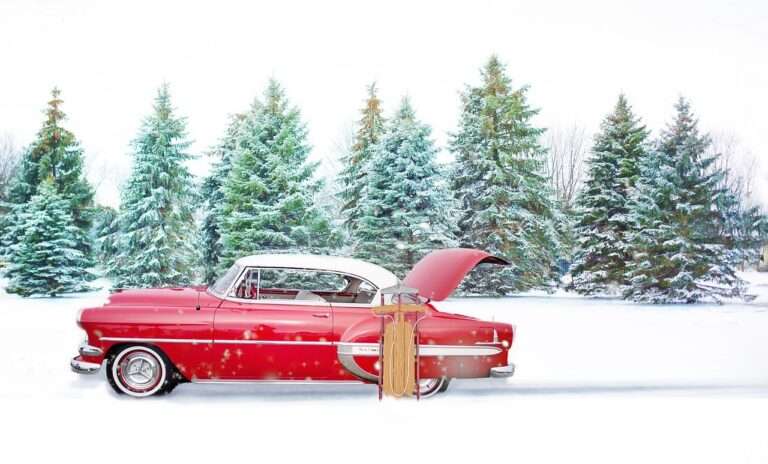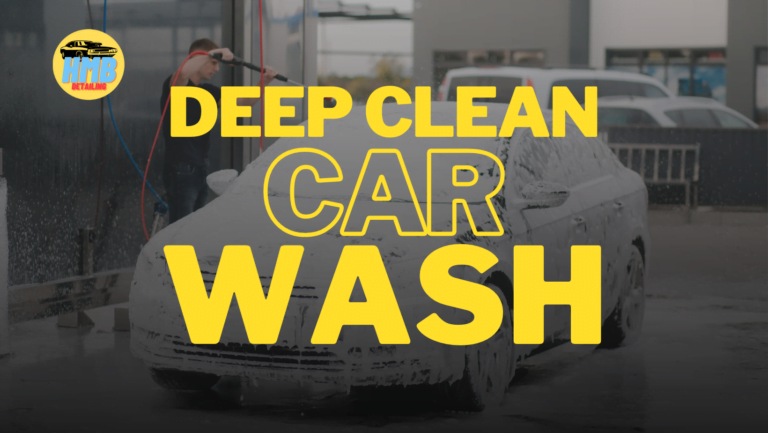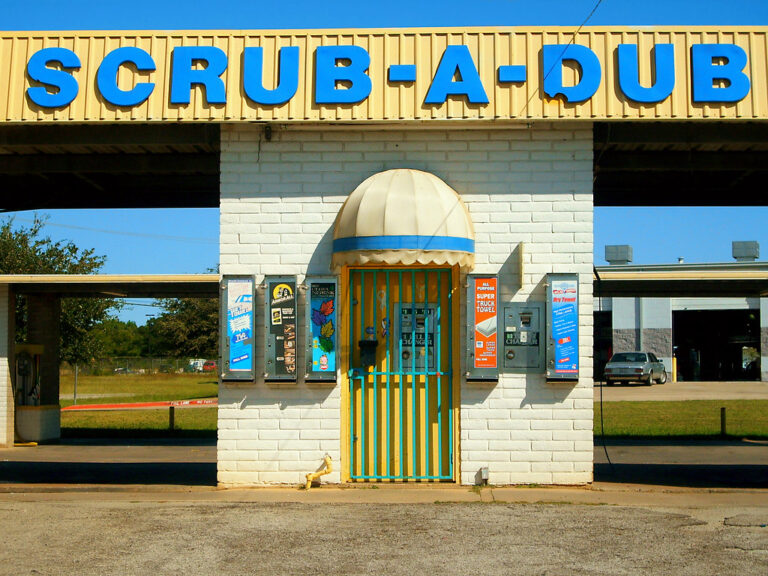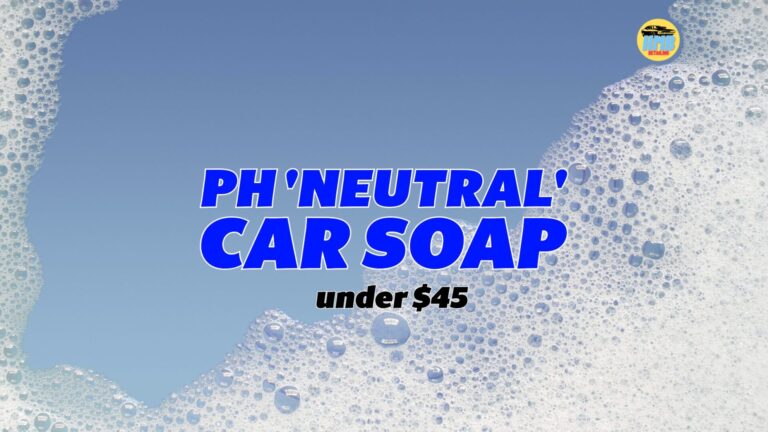Protect & Personalize: The Art of Car Wrapping
According to a report by the American Automobile Association (AAA) in 2016, Americans spend approximately $3 billion annually on vehicle paint damage repairs, including repairing car scratches. A survey conducted by the automotive research of IMR Inc. in 2017 found that the average cost for a single car paint scratch repair in the United States was around $400. These statistics tell that car scratches are a common problem for every car owner. Because of this reason, we created a detailed guide about car scratches repair that can save visitors to our website at least $400. But what if you want to prevent scratches and paint damage and make it more effective than applying wax or ceramic coatings? Car Wrapping is here to help you with it.
Car wrapping is a hot trend in the car detailing world. It allows car owners to give their vehicles a fresh and unique appearance and provide ultimate scratch protection. If you are considering wrapping your vehicle, you are in the right place! In this comprehensive guide, I will cover everything you need to know about car wrapping, from its pros and cons to picking the perfect wrap for your car and more. Let’s dive in!
Car Wrapping: What is it and Why is it the Latest Trend in Auto Detailing?
Car wrapping is the process of applying a vinyl film to a car’s paint. It transforms the vehicle’s appearance without altering the original paint. The vinyl film allows you to choose between various colors, patterns, and finishes and gives endless customization options. From glossy and matte finishes to carbon fiber and chrome designs, the possibilities are limitless. Car wrapping appears in the late 1990s and early 2000s, which makes it a comparable new option for the improvement of the car’s appearance. In such a short time, it became popular among car enthusiasts, businesses, and individuals due to its ability to give a unique look to a vehicle, protect the original paint, and its temporary nature, which allows for easy removal without damaging the paint.
The Pros and Cons of Car Wrapping: Is it Worth the Investment?
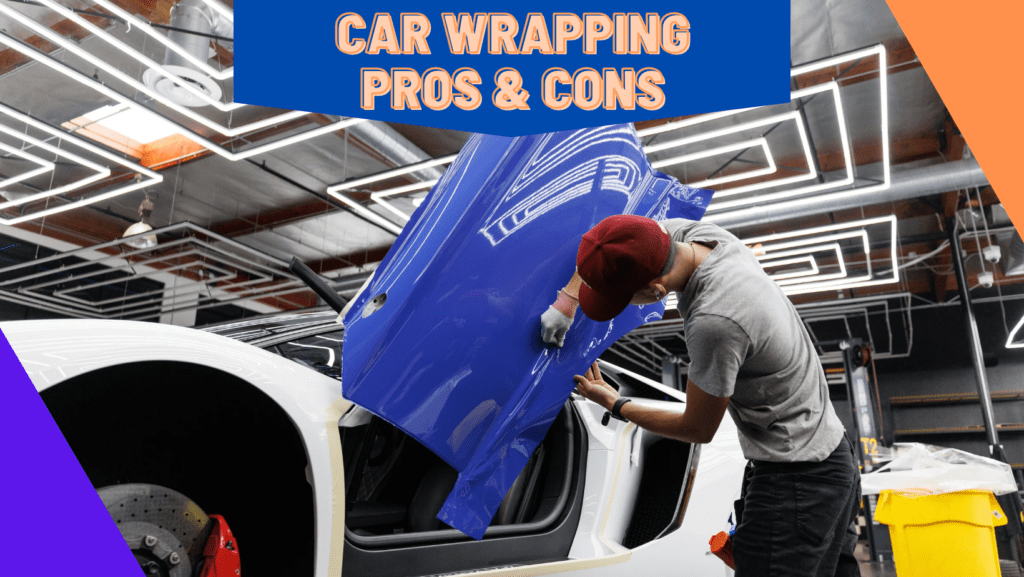
As with any car modification, car wrapping has its advantages and disadvantages. Acknowledging the pros and cons of every modification, we can make a wise decision if it is worth our investment or not. Let’s take a closer look at the pros and cons of applying car wrap:
Pros of Car Wrapping
- Customization: Car wrapping offers endless design possibilities, allowing you to personalize your car to your taste, style, or business needs. Compared to traditional car paint, vinyl wraps allow even the creation of volumetric designs and the same complicated shades and combinations as traditional paint at a lower price.
- Paint protection: The vinyl film acts as a protective layer on your car’s paint, shielding it from UV rays, dirt, harsh chemicals, and minor scratches. High-quality vinyl wraps give you better protection than wax and ceramic coatings.
- Temporary: Unlike a paint job, a car wrap is temporary and can be easily applied and removed without damaging the original paint. It makes it ideal for car enthusiasts and business vehicles. Imagine how expensive and complicated would be to follow all fast-changing automotive design trends without vinyl wraps.
- Cost-effective: Car wrapping is often more affordable than a complete repainting job, which makes it a budget-friendly option for a new car look.
Cons of Car Wrapping
- Durability: Modern car wraps are durable but not as long-lasting as a high-quality paint job and may require replacement in several years.
- Quality Variability: The quality of car wraps can vary depending on the manufacturer, material, and installation. It can affect overall appearance and longevity. Always check reviews of wraps you are going to use and visit trusted detailing services.
- High-quality prep: For a proper appearance of your car after the installation of car wrap, your car’s paint surface should be even. Removing any imperfections and damages on the paint can make car wrapping more expensive.
- Maintenance Requirements: Vinyl wraps have different maintenance requirements than traditional car paint, such as avoiding excessive heat or prolonged exposure to the sun. Not every car owner follows proper maintenance, which leads to fast damage and unwrapping of vinyl.
When you decide to change something in your car’s appearance, you choose between car paint and car wrap. Ultimately, such a choice depends on your budget, preferences, and desired outcome. If you want a temporary and customizable solution that will protect your paint, car wrapping is ideal for you. However, if you want a permanent and exact color match with a deeper gloss and color, a traditional paint job may be better for you.
Step-by-Step Guide: How to Choose the Perfect Car Wrap for Your Vehicle

Selecting the best wrap for your car that will fit your budget and design preferences and will last long can be challenging, especially if you do it for the first time. With an array of options available in terms of colors, finishes, patterns, and quality, it’s important to carefully consider your choices to achieve the desired look of your car. In this step-by-step guide, we will go through the process of choosing the ideal car wrap for your vehicle, so you will know where to start and what to pay attention to when considering wrapping your car.
Step 1: Assess Your Goals
Before diving into a world of car wraps, it’s important to understand what exactly you want from wrapping a car and assess your goals. Are you looking to change the appearance of your vehicle, protect it, or use it for advertising purposes? Understanding your specific goals will help you to narrow down vinyl wrap options and set a reasonable budget.
Step 2: Research Different Types of Vinyl Wraps
Different types of vinyl wraps are available on the market, each with its unique appearance and characteristics. Before making a decision, you should know your options. Research different types of vinyl wraps, such as gloss, matte, satin, metallic, chrome, color-shifting, and textured finishes, to understand their properties, appearance, and durability.
Step 3: Consider Durability and Maintenance
Durability and maintenance are crucial factors when choosing the best car wrap. High-quality vinyl wraps can last anywhere from 3-10 years, depending on the type of vinyl, application quality, and environmental factors. Look for wraps that can offer you UV resistance, weather resistance, and easy maintenance.
Step 4: Set a Budget
Car wraps come in a wide range of prices, so setting a budget for such modification will save you time searching for a suitable option. Consider such factors as the type of vinyl and its brand, complexity, price of installation, and size of your vehicle. Keep in mind that investing more in a higher-quality wrap may be more cost-effective, as it will last longer, and you will not spend extra on reapplying and buying new vinyl wrap. If you want to use a wrap design that might be out of trend in a short time, or you want to change wrap designs and colors often, maybe you don’t need the most expensive wraps that can last eight years and invest more money in its longevity.
Step 5: Evaluate Color and Finish Options
When choosing car wrap, color and finish are the main factors that impact the overall appearance of your vehicle. Consider your style and the original color of your car. Experiment with different color and finish options to visualize how they will fit your automobile and personal tastes. Use wrap visualizers or photos of your vehicle in various wraps to find the best one.
Step 6: Seek Professional Advice
When you are not sure about the vinyl wrap that suits best for your vehicle, it’s always a good idea to consult a professional detailer, car wrap installer, or reputable car wrap provider. They can assist you and show real-life examples, where you can see how color will look in the sun and how the wrap’s finish feels to the touch.
Step-by-Step Guide: Car Wrapping – Tips and Techniques
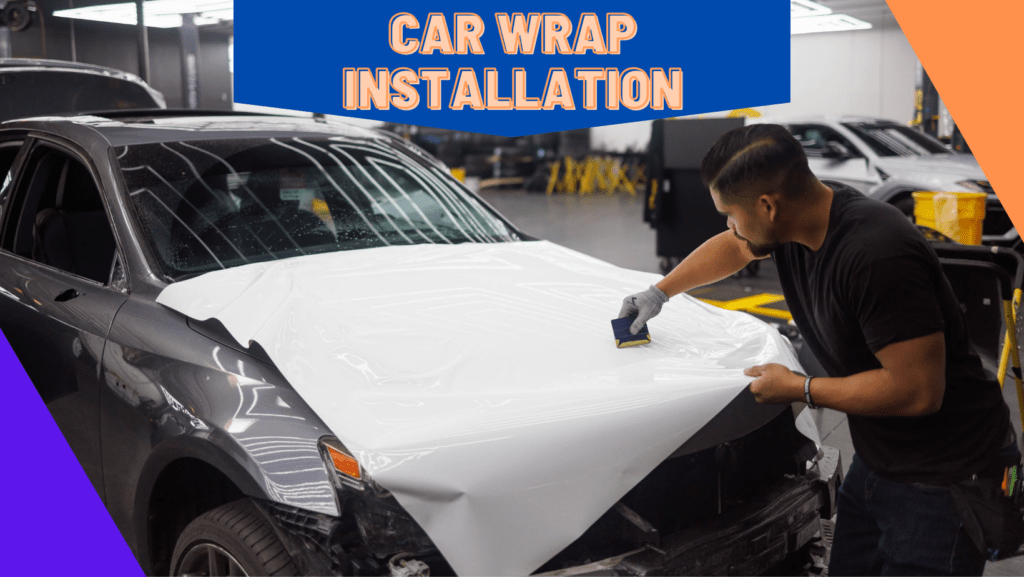
Car wrapping requires precision and skill. While some car owner trusts their vehicles to experienced installers, others may choose DIY application. It doesn’t matter which way of application your choose, professional or DIY. You should understand the process of car wrapping and know the proper techniques for achieving professional results. For DIY, it’s essential to know the application technique, but for those who use professional services, useful to know them to recognize if the installer of your car wrap is making everything properly.
Step 1: Gather the Right Tools and Materials for Car Wrapping
Before you start, make sure you have all the necessary tools and materials. For car wrapping, you will need these tools and materials:
Tools
- Heat gun
- Squeegees
- Cutting tools
- Adhesive remover
- Cleaning supplies (car wash shampoo, microfiber towels, rubbing alcohol)
- Measuring tape or ruler
Materials
- Vinyl Wrap
- Primer or adhesion promoter
- Application tape or transfer tape
- Edge sealer
- Masking tape
Step 2: Clean and Prep the Vehicle for Car Wrapping
With proper preparation, your wrap will last longer, and prep is prime for successfully wrapping a car. High-quality prep, in some cases, may take more time than wrapping itself.
- Wash your car thoroughly to remove any dirt, debris, contaminants, and wax that may interfere with the adhesion of the wrap.
- For the best wrapping results, the surface of your vehicle must be perfect and even as well. To achieve it, repair any scratches, dents, or imperfections on the car’s paint.
- Remove door handles, plastic trim, and moldings for proper wrapping. Mask off areas you will not wrap, such as trim, emblems, or windows. For this, use masking tape or painter’s tape.
- Use rubbing alcohol or a similar solution to remove any remaining residue or contaminants from the vehicle’s surface.
- If the car’s surface has poor adhesion, apply an adhesion promoter or primer according to the manufacturer’s instructions. Allow it to dry thoroughly before moving to the next steps.
Step 3: Measure and Cut the Wrap Material
Measure and cut the wrap according to the size and shape of each panel of your car. Leave some extra material for adjustments and trimming during the installation process. Take your time to ensure accurate measurements and cuts.
Step 4: Apply the Wrap Material
Start applying vinyl wrap with the largest panels first, such as the hood, roof, or sides of a car.
- Use a heat gun to soften the wrap and make it more pliable for stretching and conforming to the car’s contours.
- Align the wrap material to the car body part, using application tape to help with positioning.
- Using a squeegee, smooth out the wrap, starting from the center and moving outward, removing any air bubbles.
- Use heat if needed to stretch and adjust the vinyl wrap to the curves, corners, and edges of the vehicle.
- Repeat the process for the rest of the car, overlapping the edges of the wrap for a seamless look.
Step 5: Trim and Finish
- Use precision cutting tools to trim the excess wrap along the edges and contours of the vehicle.
- Seal the edges of the wrap using edge sealer to prevent the wrap from peeling over time.
- Remove any masking tape applied previously.
- Use a heat gun to apply gentle heat to activate the adhesive for better bonding.
Step 6: Post-Installation Care
- At least the first 24 hours after installation, avoid washing the vehicle.
- Avoid using any harsh cleaning products or chemicals on the wrapped car. Also, using abrasive materials can damage the wrap.
- Use pH-balanced shampoos for washing the wrapped car and a high-quality drying towel for drying it.
- Regularly inspect the wrap for any signs of peeling or damage, and remove them promptly.
Top Car Wrap Brands: Which Brands Are Best for Car Wrapping?
When you choose the best car wrap for your vehicle, you will go through numerous brand names and wrap film manufacturers. The brand you select plays a significant role in the overall quality and longevity of the wrap you choose. With a wide range of available car wrap brands, it’s important to do research and select a reputable brand that offers high-quality products, reliable durability, and excellent customer support for a reasonable price. Here are some of the best and most popular car wrap brands known for their high quality and exceptional performance:
1. 3M

3M is a renowned brand that started its way in 1902. Now they operate in 70 counties and sell their products in 200, and known for their high-quality vinyl wraps for the automotive industry. They provide a wide range of color options, finishes, and textures for their vinyl wraps. Their products proved to be durable and reliable. They provide excellent protection and aesthetics for cars.
2. Avery Dennison
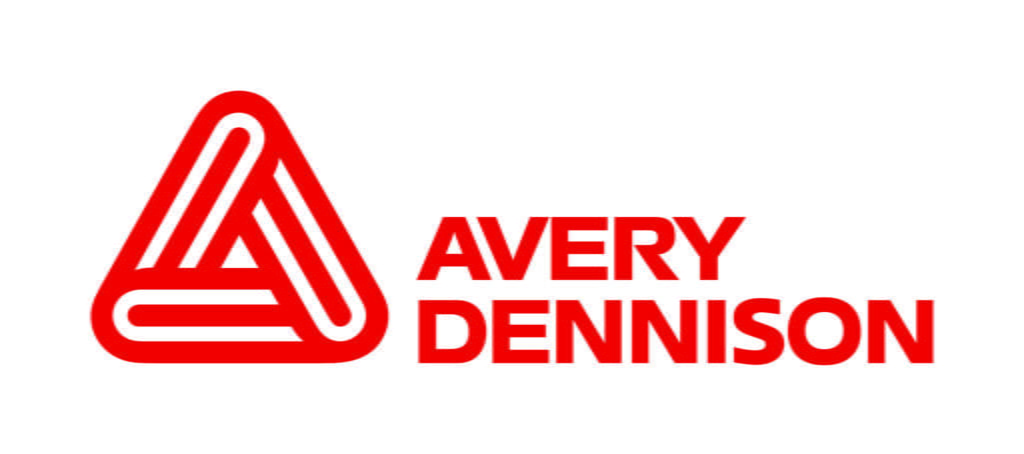
Avery Dennison’s story began in 1935. Now it’s a leading brand in the car wrapping industry that operates in over 50 countries. This brand is well known for its innovative and high-quality vinyl wraps. They offer a wide range of colors, finishes, and textures. Avery Dennison wraps are durable, easy to install, and provide long-lasting performance.
3. Oracal
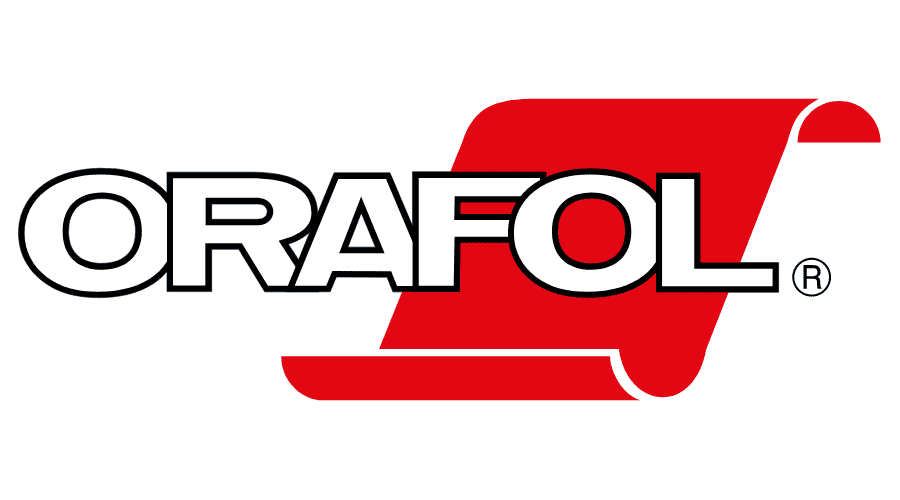
ORAFOL Europe GmbH started its way in 1996, and in 2006 Oracal USA changed its name to ORAFOL Americas to better align with the ORAFOL Group of companies. The Oracal is a well-known brand among car wrap installers and enthusiasts. They offer a wide variety of high-quality vinyl wraps for vehicles for affordable pricing. Vinyl wraps of this brand are available in various textures, colors, and finishes, providing versatility and durability for different types of vehicles and different purposes.
4. Vvivid
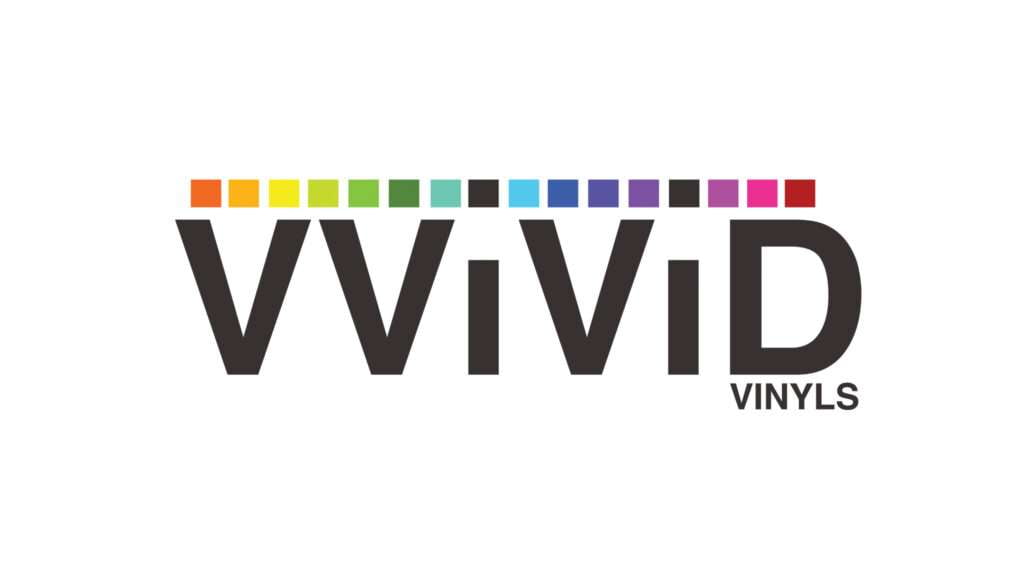
Vvivid Vinyls is a well-known brand in the car wrapping industry that operates for more than 30 years. The company produces high-quality vinyl wraps with vibrant colors and unique finishes. They offer a diverse range of vinyl wraps for vehicles, providing options for creative customization and unique looks.
5. Hexis

Hexis is a premium brand that offers high-quality vinyl wraps since 1989. Their products offer exceptional durability and performance. The brand is known for its cutting-edge technology and innovative designs. Hexis wraps are popular among car enthusiasts and professionals who demand top-notch quality.
When you select a car wrap brand, it’s important to consider many factors, such as durability, ease of installation, color preferences, pricing policy, and customer reviews. Consulting with professional car wrap installers or car detailing professionals can provide you with valuable insights and help you to choose the best product for your vehicle.
Frequently Asked Questions About Car Wrapping

Q: How long does a car wrap typically last?
A: Car wraps can last from 3 to 7 years, depending on vinyl wrap quality, way of installation, and maintenance routine.
Q: Can a car wrap be removed without damaging the original paint?
A: Yes, when a car is wrapped and unwrapped properly. However, using improper installation or removal techniques can potentially cause damage to your car paint.
Q: Are there any limitations or considerations with car wrapping?
A: Yes, there are some limitations to car wrapping. For example, applying car wrap on a damaged or rusted surface may not let the wrap adhere properly. As well, some areas of the vehicle can be complicated to wrap, like sharp edges, deep recesses, or complex contours. Before proceeding with a wrap project, consult with a professional.
Q: How much does car wrapping cost?
A: The cost of wrapping depends on many factors, like the quality and brand of vinyl wrap, sizes of vehicles, the complexity of design, and installation charges. For example, the average cost of wrapping a mid-size SUV in the United States can range from $2,500 to $5,000. It’s best to request quotes from your local reputable car wrap installers to get accurate pricing for you.
Q: Can I wash my car wrap like a regular car?
A: Yes, you can. However, it’s recommended to avoid using harsh chemicals, harsh cleaners, and abrasive materials while washing a wrapped car, as they may damage the wrap.
Q: Can I wrap a leased or rented vehicle?
A: Yes, car wrapping is a popular option for leased or rented cars. It can be easily removed without leaving any residue or damage on the vehicle, allowing you to restore its original condition before the lease or rental period ends.
Q: Can I design my own car wrap?
A: Yes, many car wrap installers and brands offer their customers to create their own unique car wrap design. However, it’s important to work with a professional designer who understands the intricacies of car wrapping for the best results.
Conclusion
Car wrapping is a popular option for car owners looking to customize and make a unique vehicle’s appearance, protect original paint, or even advertise a business. Modern car wraps give us endless creative possibilities due to their wide range of vinyl materials, colors, finishes, and designs.
We went through all the steps, from choosing the best wrap, proper ways of wrap installation, and best wrap brands, and answered frequently asked questions. It will help you to wrap your car, or even start a detailing business!
I hope that with our guide, you will succeed in choosing the best vinyl wrap design and will add another unique car on our roads that will turn heads. Remember to always consult with reputable professionals and follow best practices to complete your project successfully. Happy car wrapping!
